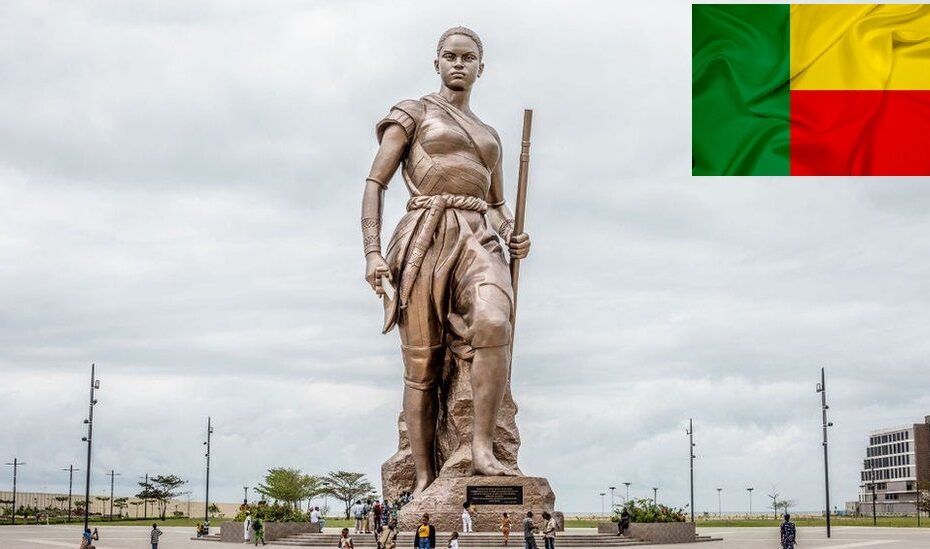General Country Information
- Official Name: Republic of Benin
- Capital City: Porto-Novo (official), Cotonou (economic capital and largest city)
- Official Language: French
- Indigenous languages: Fon, Yoruba, and several others
- Currency: West African CFA franc (XOF)
- Government Type: Presidential republic
Geographical Location:
- Continent: Africa
- Neighboring Countries: Togo (to the west), Nigeria (to the east), Burkina Faso (to the northwest), Niger (to the northeast)
- Major Cities: Porto-Novo, Cotonou, Parakou, Abomey, Djougou
Brief History and Political Overview:
- Benin, formerly known as Dahomey, gained independence from France on August 1, 1960. The country has experienced periods of political instability, including several coups. In 1990, Benin transitioned to a democratic system. The current president, Patrice Talon, has been in office since 2016. Significant historical events include the return to multiparty democracy in 1991 and the peaceful transitions of power.
Religions and Cultural Highlights:
- Religions: Christianity (predominantly Roman Catholic), Islam, Vodun (Voodoo), and other indigenous beliefs.
- Cultural Highlights: Benin is known as the birthplace of the Vodun (Voodoo) religion. The country has rich cultural traditions including music, dance, and art, particularly wood carving and bronze casting.
Economy
GDP (latest available data):
- GDP (2023 in purchasing power partity terms): Approximately $53 billion (Data source: World Economics Research, London)
Major Industries:
- Agriculture (cotton, cashew nuts, palm oil, cocoa)
- Services (trade, transportation, telecommunications, banking)
- Manufacturing (textiles, cement, food processing)
Key Economic Indicators:
- GDP Growth Rate (2023): 5.8% – Worldbank
- Inflation Rate (2023): 2.8% – Worldbank
- Poverty Levels (2023): Approximately 38% below the poverty line
- Investment Climate: Benin has been improving its business environment, with reforms to facilitate investment and trade.
Trade Statistics:
- Main Export Partners: China, India, Nigeria, Bangladesh, Niger
- Main Import Partners: China, France, India, Togo, Netherlands
- Major Goods Traded: Exports (cotton, cashew nuts, shea butter); Imports (rice, machinery, petroleum products)
Currency and Exchange Rates:
- Currency: West African CFA franc (XOF)
- Exchange Rate (July 2024): 1 USD = 555 XOF
Population
Total Population (latest available data):
- Approximately 14.7 million (2024 – CIA Factbook)
- Population distribution: the population is primarily located in the south, with the highest concentration of people residing in and around the cities on the Atlantic coast; most of the north remains sparsely populated with higher concentrations of residents in the west
Population Growth Rate and Demographic Trends:
- Growth Rate: 2.7% annually
- Demographic Trends: High fertility rate and a youthful population
Age Distribution:
- 0-14 years: 44%
- 15-64 years: 53%
- 65 years and over: 3%
Urban vs. Rural Population Distribution:
- Urban Population: 48%
- Rural Population: 52%
Major Ethnic Groups and Population Diversity:
- Ethnic Groups: Fon and related 38.4%, Adja and related 15.1%, Yoruba and related 12%, Bariba and related 9.6%, Fulani and related 8.6%, Ottamari and related 6.1%, Yoa-Lokpa and related 4.3%, Dendi and related 2.9%, other 0.9%, foreigner 1.9% (2013 est. CIA Factbook)
- Population Diversity: Benin is ethnically diverse with over 40 ethnic groups.
Education Levels and Literacy Rates:
- Literacy Rate (2023): Approximately 50%
- Education Levels: Primary education is widely attended, but secondary and tertiary education enrollment rates are lower.
Workforce
Labor Force Size and Composition:
- Total Labor Force: Approximately 6 million (2023)
- By Sector:
- Agriculture: 38%
- Industry: 19%
- Services: 43%
Unemployment Rate:
- Unemployment Rate (2023): 2.6%
Workforce Skills and Education:
- The workforce is primarily involved in agriculture and informal trade. Efforts are ongoing to improve vocational training and higher education.
Labor Laws and Worker Rights:
- Benin has labor laws that protect worker rights, including minimum wage regulations, working hour limits, and health and safety standards. However, enforcement can be weak.
Migration Trends:
- Inward: Limited, mostly from neighboring countries.
- Outward: Significant migration to Europe and other parts of Africa for better economic opportunities.
Natural Resources
List of Major Natural Resources:
- Limestone, marble, timber, small offshore oil deposits, and hydropower potential
Top Minerals (in order of economic importance):
- Limestone
- Marble
- Gold (small deposits)
- Phosphates
Annual Production Volumes for Key Minerals:
- Specific production volumes vary; limestone and marble are the most significantly extracted minerals.
Mining and Natural Resources Laws and Regulations
Key Laws Governing Mining and Natural Resource Utilization:
- Mining Code (revised in 2016): Regulates all mining activities, ensuring environmental protection and benefit-sharing with local communities. [https://www.fao.org/faolex/results/details/fr/c/LEX-FAOC078273/]
- Environmental Code: Mandates environmental impact assessments for all mining projects. [https://www.fao.org/faolex/results/details/en/c/LEX-FAOC016685/]
Regulatory Bodies and Their Roles:
- Ministry of Mines: Oversees the mining sector, issues licenses, and enforces regulations.
- National Environmental Agency: Ensures compliance with environmental standards.
Recent Changes in Legislation:
- The 2016 revision of the Mining Code aimed to attract foreign investment by providing clearer regulations and incentives for sustainable mining practices.
Map of Benin: Showing geographical location and major cities

Conclusion
Benin is a country rich in cultural heritage and natural resources, with a growing economy that shows promise for continued development. Despite challenges such as poverty and infrastructure gaps, the nation’s strategic reforms in economic and legal sectors aim to attract foreign investment and boost sustainable growth. As Benin continues to improve its business environment and invest in human capital, it is poised to harness its potential and achieve significant progress in economic and social development.
Sources
- World Bank https://data.worldbank.org/country/benin
- CIA World Factbook https://www.cia.gov/the-world-factbook/countries/benin/
- African Development Bank https://www.afdb.org/en/countries/west-africa/benin
- Benin Government Websites https://www.gouv.bj/
